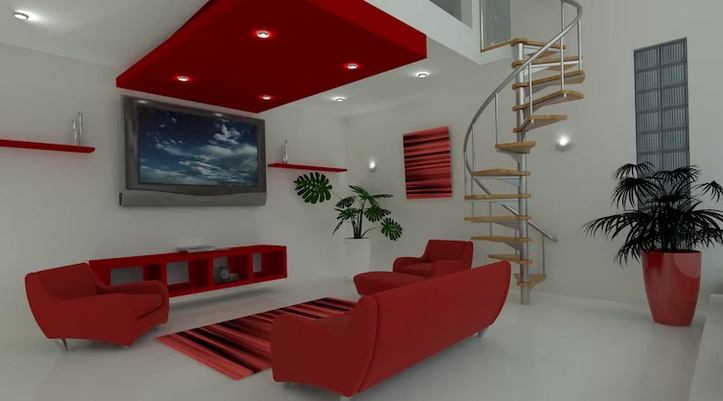In today's fast-paced business environment, optimizing space utilization within a facility is essential for productivity and cost-efficiency. Whether you're running a warehouse, manufacturing plant, or office space, the need for extra space can arise at any time. This is where mezzanine floors come into play, offering an innovative solution to create additional space without the need for expansion or relocation. In this comprehensive guide, we will explore the concept of mezzanine floors, their installation, applications, benefits, and how they can transform your facility.
Understanding Mezzanine Floors
A mezzanine floor is an intermediate level or platform that is built between the existing floor and ceiling of a building. It is a versatile and cost-effective solution for maximizing vertical space within a facility. Mezzanine floors are typically constructed using structural steel components and can be customized to suit various needs and requirements.
The Installation Process
The installation of mezzanine floors involves several key steps:
-
Assessment and Planning: The first step is to assess the available space and determine the specific requirements for the mezzanine. This includes considering factors such as load capacity, height restrictions, and intended use.
-
Design and Engineering: Once the requirements are established, the design and engineering phase begins. This involves creating detailed plans and calculations to ensure the mezzanine meets safety and structural standards.
-
Permitting and Compliance: Depending on local regulations and building codes, obtaining the necessary permits may be required before construction can commence. Compliance with safety standards is crucial throughout the process.
-
Fabrication: The components of the mezzanine, such as steel beams, columns, and decking, are fabricated off-site according to the approved design.
-
Installation: The mezzanine components are transported to the facility and installed by experienced professionals. This process can often be completed with minimal disruption to ongoing operations.
-
Safety Measures: Safety features, such as guardrails, staircases, and access points, are incorporated to ensure the safety of personnel using the mezzanine.
-
Customization: Mezzanine floors can be customized to include features like offices, storage areas, or production space, depending on the specific needs of the facility.
Applications of Mezzanine Floors
Mezzanine floors have a wide range of applications across various industries:
-
Warehousing: Mezzanines are commonly used in warehouses to create additional storage space for inventory. They allow for efficient organization of goods while optimizing the use of vertical space.
-
Manufacturing: In manufacturing facilities, mezzanines can house production lines, assembly areas, or quality control stations, helping to streamline processes and improve workflow.
-
Office Space: Mezzanines can be converted into office spaces, providing a quiet and separate working environment within a larger facility. This is especially beneficial for companies with limited office space.
-
Retail: Retail stores can use mezzanine floors to showcase additional products, create elevated shopping areas, or house administrative functions.
-
Gyms and Fitness Centers: Fitness facilities often use mezzanine levels for cardio equipment, stretching areas, or offices for trainers and staff.
-
Distribution Centers: Mezzanine floors are ideal for distribution centers to accommodate sorting, packaging, and order fulfillment operations.
-
Agriculture: In agricultural settings, mezzanines can be used for storage of equipment, feed, and other supplies, helping to keep them organized and easily accessible.
-
Automotive: Car dealerships and repair shops can utilize mezzanines for showcasing vehicles, storing parts, or creating additional workspace for mechanics.
Benefits of Mezzanine Floors
Now that we understand the concept and applications of mezzanine floors, let's explore the benefits they offer:
-
Cost-Efficiency: Mezzanine floors are a cost-effective alternative to building expansions or relocating to larger facilities. They maximize the use of existing space without the need for major construction.
-
Quick Installation: Mezzanines can often be installed more quickly than traditional building expansions, minimizing downtime and disruption to operations.
-
Space Optimization: Mezzanines make efficient use of vertical space, allowing businesses to maximize their floor area without expanding their footprint.
-
Customization: Mezzanines can be customized to meet specific needs, whether it's for storage, production, office space, or retail displays.
-
Improved Workflow: By creating additional space, mezzanines can help streamline workflow and improve operational efficiency.
-
Enhanced Safety: Safety features, such as guardrails and handrails, ensure that personnel can work on the mezzanine safely. Additionally, they can help reduce clutter on the main floor.
-
Tax Benefits: In some regions, mezzanine installations may qualify for tax incentives or deductions, making them an even more attractive investment.
-
Versatility: Mezzanines are versatile and can be disassembled and relocated if the need arises, providing long-term flexibility.
-
Increased Property Value: Mezzanine installations can increase the overall value of a property, which can be advantageous for property owners.
-
Sustainability: Mezzanines promote sustainability by minimizing the need for new construction and reducing the environmental impact associated with expansion.
Conclusion
Mezzanine floors are a practical and versatile solution for creating additional space within your facility. Whether you're looking to optimize your warehouse, manufacturing plant, office, or retail space, mezzanines offer numerous benefits, including cost-efficiency, quick installation, and improved workflow. Their adaptability and customization options make them suitable for a wide range of applications, while safety features ensure the well-being of personnel.
In a competitive business landscape, the ability to make efficient use of existing space is a strategic advantage. Mezzanine floors provide the means to expand vertically, unlocking new possibilities for growth and productivity without the need for costly construction projects or relocations.
By investing in mezzanine floors, you're not just creating additional space; you're investing in the future of your business. With their myriad benefits and long-term flexibility, mezzanines are a valuable asset that can contribute to the success and sustainability of your facility.
So, whether you need more storage space, additional production areas, or a comfortable office environment, consider the transformative power of mezzanine floors to meet your facility's needs and drive your business forward.


No comments yet